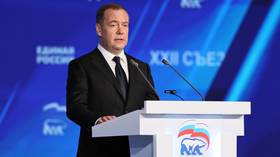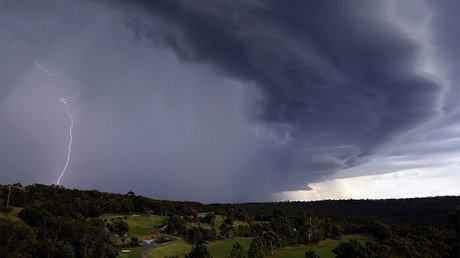Oil market will not start to see recovery before June despite historic production cuts
Major oil-producing nations struck a historic deal this month aimed at curbing global output in a bid to stabilize the market. RT spoke to experts to find out whether the deal could really solve the falling demand.
The agreement reached by members of OPEC+ and their allies, including Russia and Mexico, represents a drop in production of 9.7 million barrels per day in May and June – the deepest cut ever agreed to by the world's oil producers. After that, the group will steadily ramp up production until the agreement expires in April 2022.
Despite the record reduction, oil prices continued to slide, with US crude benchmark WTI falling to $25 a barrel and Brent just above $27.
The current situation should be analyzed from a long-term perspective, according to Rustam Tankaev, leading expert at the Russian Union of Oil and Gas Industrialists and head of the Infotek-Terminal consultancy.
Also on rt.com OPEC+ strikes last-minute deal to cut almost 10 mn barrels a day of oil productionHe told RT that it will take some time for the market to recover, and it may be clear in three months what the OPEC+ deal means for the energy industry.
For the moment, the market is not responding to the cut, and prices will stay at the same low level due to the halt of global interconnection amid coronavirus lockdowns.
“Prices will start growing, and by June we could already see the signs of market recovery,” Tankaev said. By that time, prices could reach $40-50 per barrel, although there may be some force majeure circumstances, like the potential second wave of Covid-19.
His thoughts were echoed by economist Valery Mironov, who said that within a month or two the total production cut could catch up with the fallen level of demand, and there may then be a rebound in prices to up to $40 a barrel.
“There is light at the end of the tunnel, which is the hope of price stabilization in a month and a half,” said Mironov, Deputy Director of the Center of Development Institute at the Higher School of Economics. He added that we should not worry that the remaining oil storage facilities could be full soon, because in light of the OPEC+ agreement it won’t hurt the oil market anymore.
Also on rt.com Coronavirus has wiped out a decade of oil demand growthOPEC+ has been seeking to cut production in order to buoy oil prices, which crashed to 18-year lows. The agreed reduction in output amounts to only about ten percent of the world's normal supply of oil.
According to Tankaev, the OPEC+ agreement and the position of non-OPEC oil producers (including the United States, Canada and Norway) to cut production, could balance the supply-demand ratio and the oil market as a whole.
“By the end of the year, prices will recover and there will be an equilibrium price level of about $60 per barrel,” he said.
Both experts point out that, despite the fact that the US cannot actively intervene in OPEC+ actions due to the antitrust law, it is interested in higher oil prices in order to preserve its shale production.
“US President Donald Trump relies heavily on the oil sector. Unemployment in the sector is unfavorable for him this year, because elections are on the way,” said Mironov.
For more stories on economy & finance visit RT's business section














